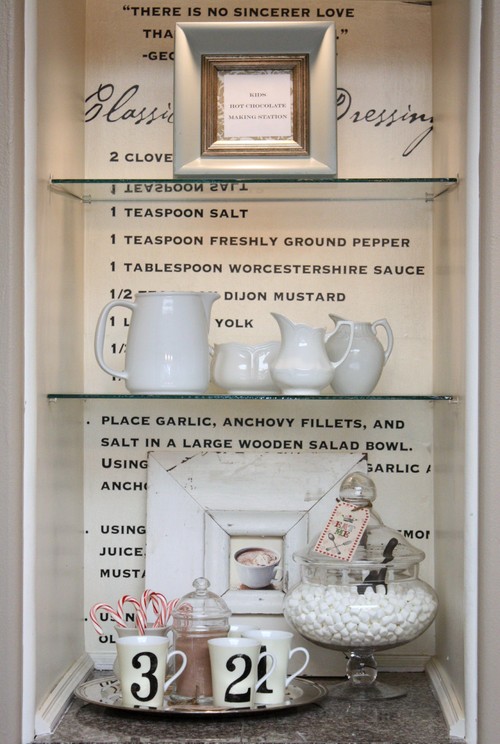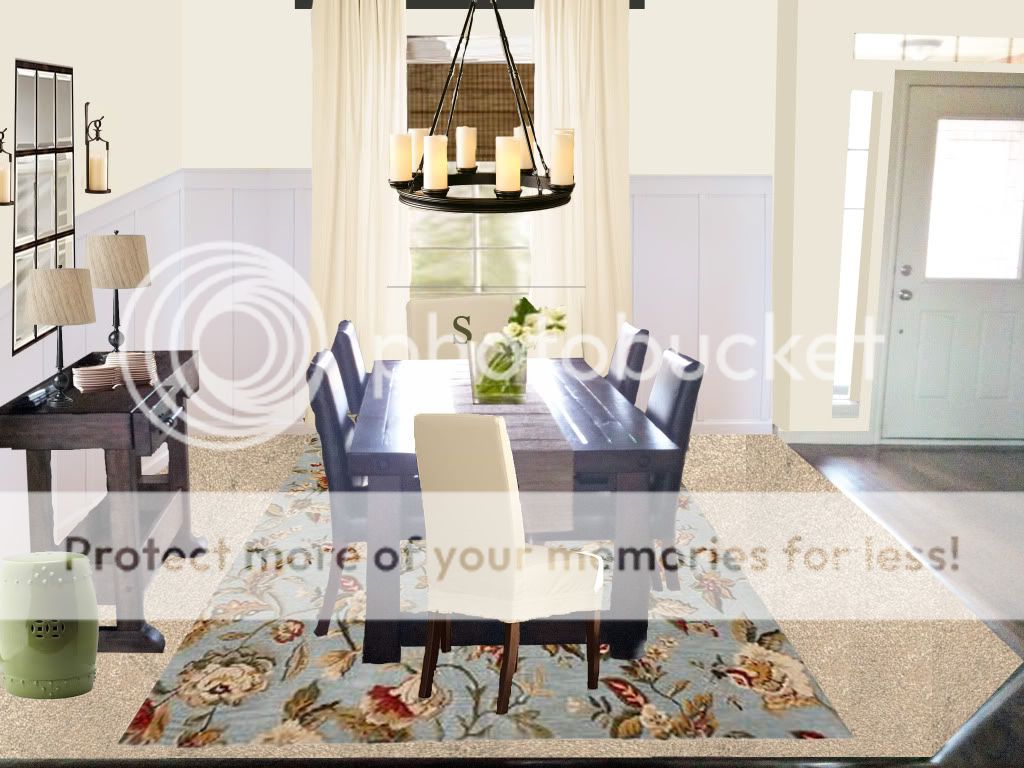I was honored when a sweet gal named Jessica wrote to me asking for some guidance in decorating her new house.
Jessica loves color and was craving some in her house, but after trying out 19 different colors of paint on her walls, she was having a hard time making decisions.
Like so many of us, myself included, Jessica has a house with an open floor plan where rooms share walls and ceilings.
This can make the process of choosing colors for spaces rather difficult.
In my own house, I've found that when several different rooms are seen together, it's very helpful to map out a color plan for the entire house first.
Making a color map or plan helps create a unified environment because each color is supported by others in a harmonious palette.
Here are two examples of color plans to give you an idea of what I am talking about...
{Source for above images: Pottery Barn HOME}
Based on what I learned about Jessica's preferences, her current furniture, and the layout of her house, here is the color plan I came up with for her...
{The above colors are all made by Benjamin Moore. Please note that computer screens can alter the way a color actually appears, so be sure to test swatches that you are considering first.}
If you have a home where the rooms flow together, choose neutral colors for central spaces and build upon them.
Jessica's central spaces include her entry, dining room, and family room, which is why I chose the neutral colors Clay Beige and Collingwood.
One way Jessica can get the color she craves is by adding in rugs, pillows and other accessories to compliment the above soothing neutral colors.
Another way to showcase color is to add colorful paint in small doses. This can be done by painting smaller areas or rooms in the house, accent walls, pieces of furniture, or the back walls of bookcases.
Here are some examples of ways to add color to neutral backdrops...
{Source: Apartment Therapy}
{Source: Good Housekeeping}
{Source: Houzz}
{Source: Houzz}
{Source: House of Turquoise}
To add some color to Jessica's house, I suggested that she paint the backs of her beautiful white built-in bookcases a soothing shade of Buxton Blue.
Leaving more open space in the bookshelves and only displaying a select number of books
and carefully chosen accessories would allow for the blue to peek though
in an attractive display.
Additionally, it would be easy to paint her office a shade of green with more saturation
{like Guilford Green}
since the room is closed off and does not share walls with other rooms in the house.
However, the green would be visible from other parts of the house since the office has glass doors so it is important that the green coordinates with the color palette in the rest of the house.
To carry the green from the office into other parts of the house,
I suggested painting the kitchen and breakfast nook a lighter,
more subtle shade of green {Soft Fern}.
Just for fun, I gave Jessica's dining room a virtual makeover to show her what it could look like with a new, lighter neutral paint color and some subtle pops of color.
{Hover your mouse back and forth over the below image to see the transformation}
Jessica had already purchased the GORGEOUS table, chairs, and bar
from Pottery Barn, so all the room needed was a little remixing.
Almost everything I added into the room is also from Pottery Barn:
Rug: Vanessa Floral Rug in Blue
Drapes: Peyton Drape in French Ivory
Mirror: Eagan Multipanel Small Mirror
Candleholders on wall: Artisanal Wall-Mount Candleholders
Lamps: Gillian Candlestick Bedside Lamp Base with Natural Fiber Tapered Drum Shades
Head Chairs: Napa Chair & Monogrammed Slipcover
Chandelier: Veranda Round Chandelier
Jessica actually had this rectangular chandelier in mind...
but I couldn't get the angle right to fit in into the virtual makeover,
so I stuck the round one in to giver her an idea of what the style of chandelier would look like.
I also added in some white board and batten paneling to the two dining room walls.
This helps define the space and separate it from the other adjoining rooms.
The crisp white paint of the paneling also adds some brightness to the room
so that it doesn't feel too heavy with the dark wood furniture.
Here are some great tutorials written by fellow blog gals on how to do Board & Batten Paneling...
Here is one more look at the before and after of Jessica's dining room in case the above rollover wouldn't work on your computer...
I hope that helps you, Jessica!
Remember that there is no "right" way to decorate; just do what YOU love!

















































